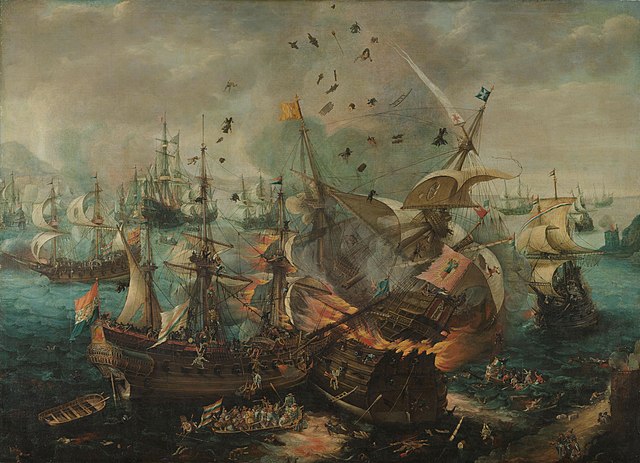Siege of 's-Hertogenbosch
The siege of 's-Hertogenbosch also known as the siege of Bois-Le-Duc was an action in 1629, during the Eighty Years' War and the Anglo–Spanish War in which a Dutch and English army captured the city of 's-Hertogenbosch. The city had been loyal to the King of Spain since 1579 and was part of the Spanish Netherlands.
The defeated Spanish garrison leaving 's-Hertogenbosch, 17 September 1629 by Pauwels van Hillegaert 1635. Oil on Canvas.
Frederick Henry, Prince of Orange and Ernst Casimir at the siege of 's-Hertogenbosch.
Exodus of the Spanish garrison from Den Bosch, 1629. By Charles Rochussen
The Eighty Years' War or Dutch Revolt was an armed conflict in the Habsburg Netherlands between disparate groups of rebels and the Spanish government. The causes of the war included the Reformation, centralisation, excessive taxation, and the rights and privileges of the Dutch nobility and cities.
The Battle of Gibraltar, 1607.
The Beeldenstorm or Iconoclastic Fury was a more or less organised destruction of Catholic sacred objects which swept through the Habsburg Netherlands' churches in 1566. 1630 painting by Dirck van Delen
Capture of Brielle in 1572 by Anthonie Waldorp (1862)
Stadtholder Maurice of Nassau during the 1600 Battle of Nieuwpoort, a tactical Dutch victory for little gain







